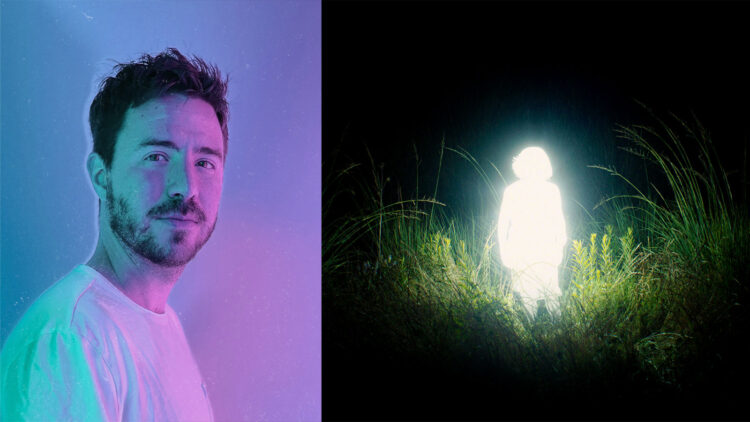From statues that weep blood to dancing suns that lead to sudden darkness in the middle of the day, the Catholic faith overflows with accounts of miracles. But in order for a miracle to be deemed as such, it must go through a series of rigorous examinations during which the vast majority of occurences are debunked. The pious Rita López (Mónica Villa), the protagonist of Tomás Gómez Bustillo’s Chronicles of a Wandering Saint, spends her days seeking to be of service in her local church, but realizes nothing will pave her path to heaven faster than coming up with her own miracle––hence she enlists her husband Norberto (Horacio Marassi) in the restoration of a statue that might have mystical powers.
In his feature-length debut, Gómez Bustillo creates a world in which the mundane and divine are partners in a waltz that goes from sublime to absurd. With loving irreverence, he pays tribute to the small towns that make up the cultural richness of countries like his native Argentina––towns where talking to ghosts is as common as getting milk from the market, or having a dog visit a temple on a daily basis as if coming to pay respects.
The director comes up with breathtaking tableaux made all the richer by the droll humor with which they’re infused. Watching Rita observe a ridiculous romance unfold through her neighbor’s window combines the naughtiness of Hitchcock with the melancholy of Roy Andersson. We spoke to Gómez Bustillo about his work with the legendary Villa, films as a divine act of creation, and how to exorcize Eurodance earworms.
The Film Stage: I have to ask you the most important spiritual question of all time: do you have an explanation for why dogs are so attracted to churches?
Tomás Gómez Bustillo: Finally someone asked me that. [Laughs] It’s incredible, isn’t it? I think it’s because of the cold floors. Those majolica tiles stay cold when the summer gets too hot, and to them it must be like a refuge. Have you experienced that too?
I read that you grew up between Argentina, El Salvador, and Costa Rica. I grew up in Honduras, next to El Salvador, and every church has dogs trying to sneak in or taking naps by the front door. But also, they were always present in Holy Week processions.
That I haven’t seen. I don’t have a lot of experience going to processions.
In my country we have a saying that goes, “You’re more lost than a dog in a procession.”
That’s so good. I’m stealing it.
But the thing is: I don’t feel they’re really lost. They seem to have an interest in Catholic rites, there are so many images of saints with dogs, even Godard finds a connection between dogs and the divine in Goodbye to Language.
I’ve read so many quotes about how we don’t deserve dogs. I wrote most of the scenes in the film with the dog after we adopted our dog from a shelter in Los Angeles. Many scenes started manifesting themselves because of the love I have for my pup.
You’ve said that you wanted to make a film your grandmother would enjoy. Has she seen it yet?
Unfortunately my Nonna passed away a few years ago. I thought about her a lot because she used to live across from a movie theater. I used to tell her that someday I’d release a movie and all she’d have to do was cross the street and have a reserved seat. I felt her presence when I made the film, though; there’s this breath from the afterlife that I can’t explain but I felt. I was this close to dedicating the film to her, but I felt it would be reductive. But she knows this film is partly dedicated to her.
I’m so sorry about your grandmother. I was very close to my father’s mom as well, and reading about Saint Rita I was surprised to learn that a fragrance of roses emanated from her stigmata. I feel our ancestors sometimes visit us, and whenever I feel my grandmother is around I can smell roses.
That’s beautiful. My brother associates our Nonna with hummingbirds and his garden is always full of them. Many people associate objects with people who have died, but I don’t have any physical objects I associate with her. When I talk to her, I talk to the stars. This is really funny, though, kind of a family Easter egg: when Quique talks about a woman in the film, I used my grandmother’s name, so that’s my wink to her.
Tomás Gómez Bustillo
I remember all these ghost stories from growing up in Latin America. There were headless priests walking around at night, horseless carriages that would drag you to hell––they gave me so many nightmares as a child. Did you listen to any stories like those that haunt you to this day?
My Nonna wasn’t as pious as the characters in the film; she went to mass as more of a cultural thing. My parents, however, were very religious, so I remember a specific priest––he was Central American––who was like the prophet for the apocalypse. Anything you did wrong, he would tell you about the centuries you’d spend suffering in the flames of hell. Every time I told a lie I would think about spending eternity burning in flames, or every time you committed a carnal sin you were hammering another nail on Jesus’ cross. I fortunately don’t share those beliefs anymore, but as a kid they’d terrify me.
I was terrified of these orbs that would come up to you and announce someone was dying for instance.
Wow, those must’ve been part of your local folklore. I would have loved to hear them, they sound interesting––albeit scary.
Now let me get to my point as a cinephile: if we combine ghosts and orbs and all that, it’s impossible not to think that cinema is a medium of ghosts created with light.
I love nerding out about stuff like this, but yes: the whole movie is a love letter to cinema. As an audience member you are the ghost spying across different stories, peering through people’s windows, the film screen being the window. You can observe others’ lives without interfering. Or at least that’s the illusion, that the watcher isn’t involved––but of course you’re involved. That’s what happens in the film as well, when Rita looks through people’s windows or visits their homes: it’s all saying how beautiful cinema is.
I love how Rita sneezing leads everyone else to sneeze, which makes me think of how when you cough in a dark screening room, you’re giving others permission to cough as well. I hope this isn’t as corny as it sounds, but I don’t think there is anything more miraculous than making a film. You’re a filmmaker; I don’t have to tell you how many things need to align in order for a film to happen. But then, once you create this miracle and put it out into the world, it seems that everyone else’s job is to debunk it and point out why it isn’t a miracle.
Rita realizes the statue she found might not be the miracle she needs, so as a screenwriter I wondered what I would do if this happened to me––I’d make a film! So she decides to build her own miracle by directing it. She even shouts “action” to Norberto when she’s rehearsing how the big statue reveal would be. She repaints the statue, finds new props, and thinks about the mise-en-scène. Rita is directing the film of her own sainthood, so it was funny to me how easy it was to write those scenes. I would make a film, she makes a miracle––they’re analogous.
There is so much of this in the film. The thing about sneezing that you mentioned earlier: the tightest close-up in the film has her sneezing. It’s because the ghost of the camera, all of us as spectators, are getting too close to her as a character. There were so many things like this all over the film. I wasn’t trying to be Kubrick or anything; I’m just a big movie nerd.
You were also working with a saint of Argentinean cinema. How did you avoid becoming too reverential in your work with Mónica and reaching a place where you can have her do the kind of terrible Facebook profile pics our parents have?
It’s not easy, but it’s a balance you find along the way. As a first-time director you go from being overly respectful; then insecurity creeps in and you wonder if you’re imposing too much; and eventually you reach a balance where the trust you have in each other becomes the most important thing. I lost the kind of reverence that creates distance and found an admiration for her based on what a great team player she is. I think she’s one of the most important collaborators I’ve had so far in life. We both let loose and allowed the film to show us where it wanted to go. She was the most committed person. I remember this moment when we’re up shooting at 5 am, we’re all freezing to death, and the only person who wasn’t complaining––although she was soaking wet doing a shot for the seventh time––was Mónica.
In addition to everything else, the film is about the profound love her husband has for her and how she is so devoted to making this miracle happen that she fails to see all the beautiful things she has in her life. Was this a reminder to future Tomás about not letting work take over everything else in your life?
I didn’t think about my career because I didn’t have a career when I wrote the screenplay, but yes: I was thinking about my obsession for filmmaking and “achieving something.” Everything goes by so fast and it’s all a construction. I’m premiering my movie this week, next week there is another movie premiere, three years from now nobody will remember my film, and 100 years from now much less so. Our time here is so short that I needed to remind myself of that because it’s so easy to forget it.
If, a thousand years from now, aliens were watching your film…
…I hope they’ve invented something better than my movie. [Laughs]
Let’s say they haven’t. So unless you’re super-obsessive and do endless director’s cuts, a film––very much like a life––is impossible to change. How do you deal with the angles, shots, and cuts you don’t love? Do they end up haunting you forever?
You reach a point where it’s not even an issue anymore. I accept the movie the way it is. We wrapped up the film in September 2022; we submitted it into three major film festivals and they all turned us down. I understood this meant the film wouldn’t do well at all, so instead of dwelling over this I made this sort of ritual where I thanked the film for what it was, thanked it for everything it taught me, told it there was nothing else it needed to do for me, and I let it go. I started writing my next film. One week later we got into SXSW and a million things happened, leading all the way to me here talking to you about my movie.
Sure, I’d do different things today. But they wouldn’t make the same film. Back then I made the film I wanted to make with the resources I had and the passion for that specific story. I wouldn’t make that film today. So once we do a picture lock I let it go. Otherwise it hurts me; the wound never scars.
Like Saint Rita’s permanent stigmata.
Exactly.
Speaking of which: how do I exorcize DJ Sammy’s “Heaven” out of my head after watching the movie?
There is absolutely nothing you can do. I chose that song precisely because it’s impossible to get it out of your head. When did it come out? 2004? 2005?
I was dancing to it in every rave I went to in 2004…
Same here! I couldn’t believe I remembered it 20 years later, so it had to be in the movie. I’m sorry, but neither I nor anyone you pray to can make you forget about “Heaven.”
Chronicles of a Wandering Saint is now in limited release.
The post A Ghost Story: Chronicles of a Wandering Saint Director Tomás Gómez Bustillo on Dogs, Miracles, and Damnation first appeared on The Film Stage.




